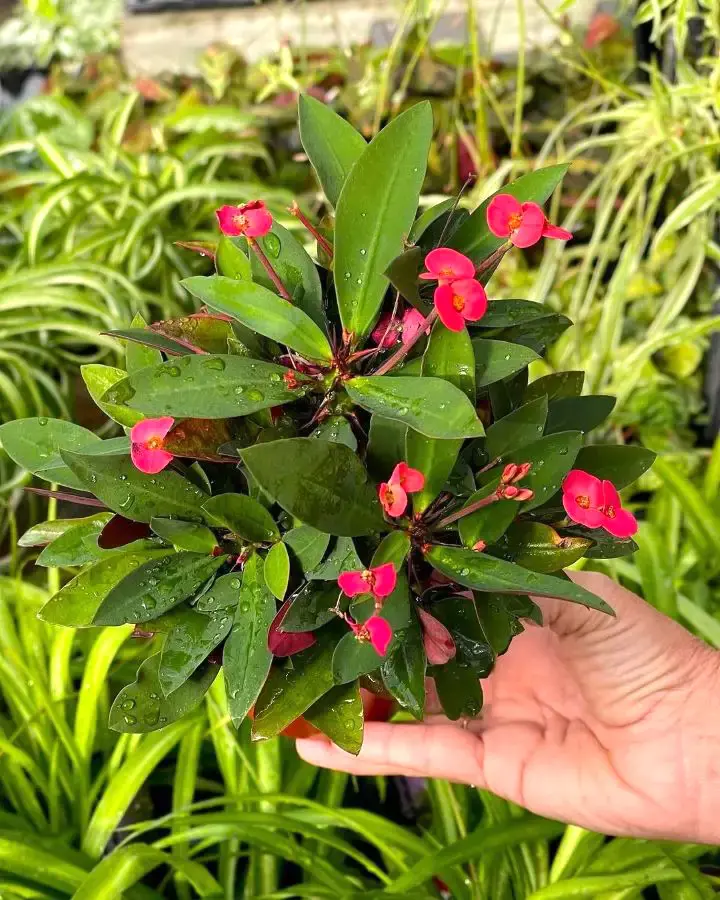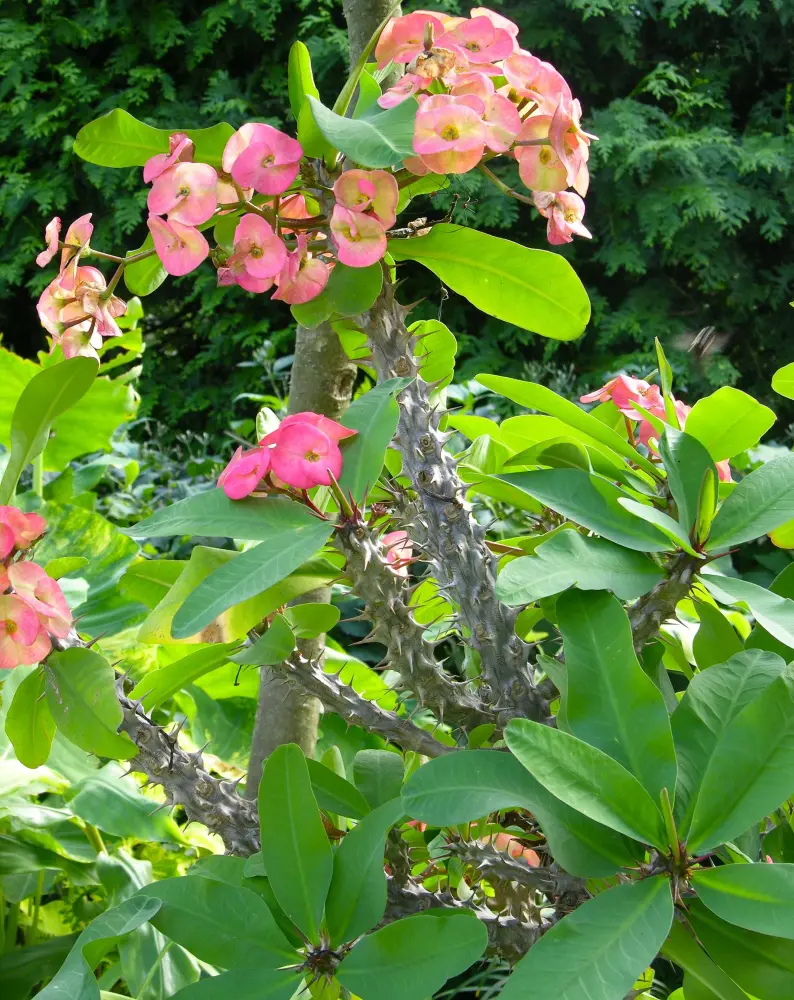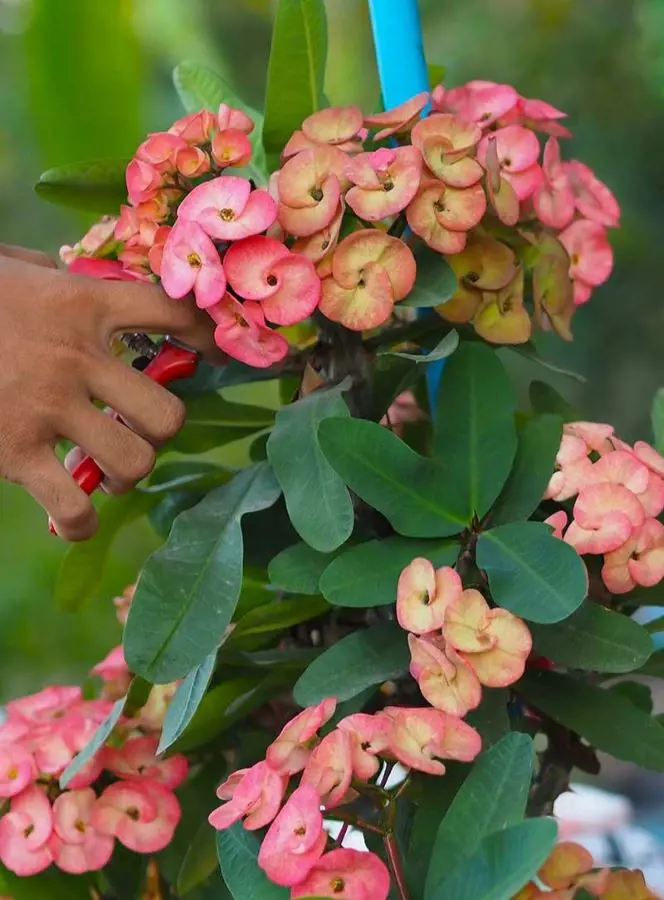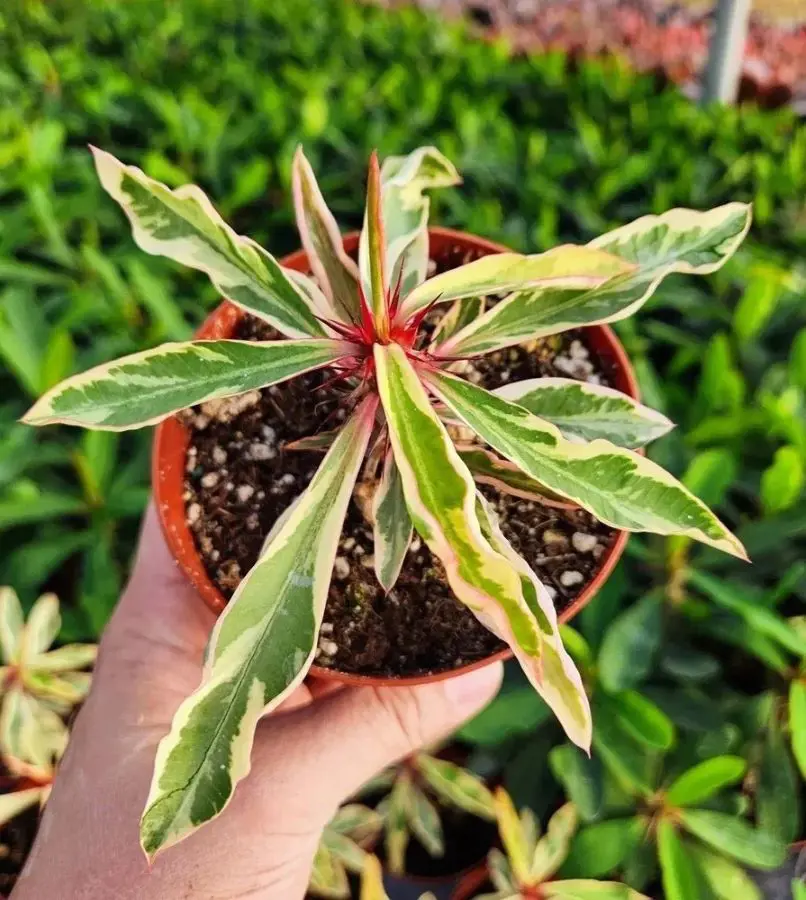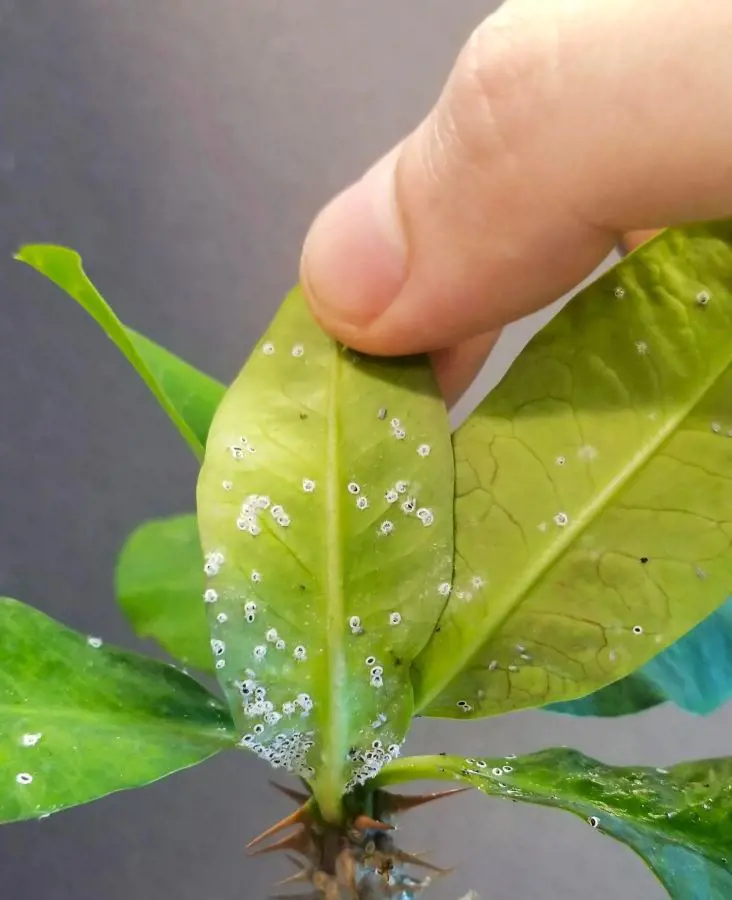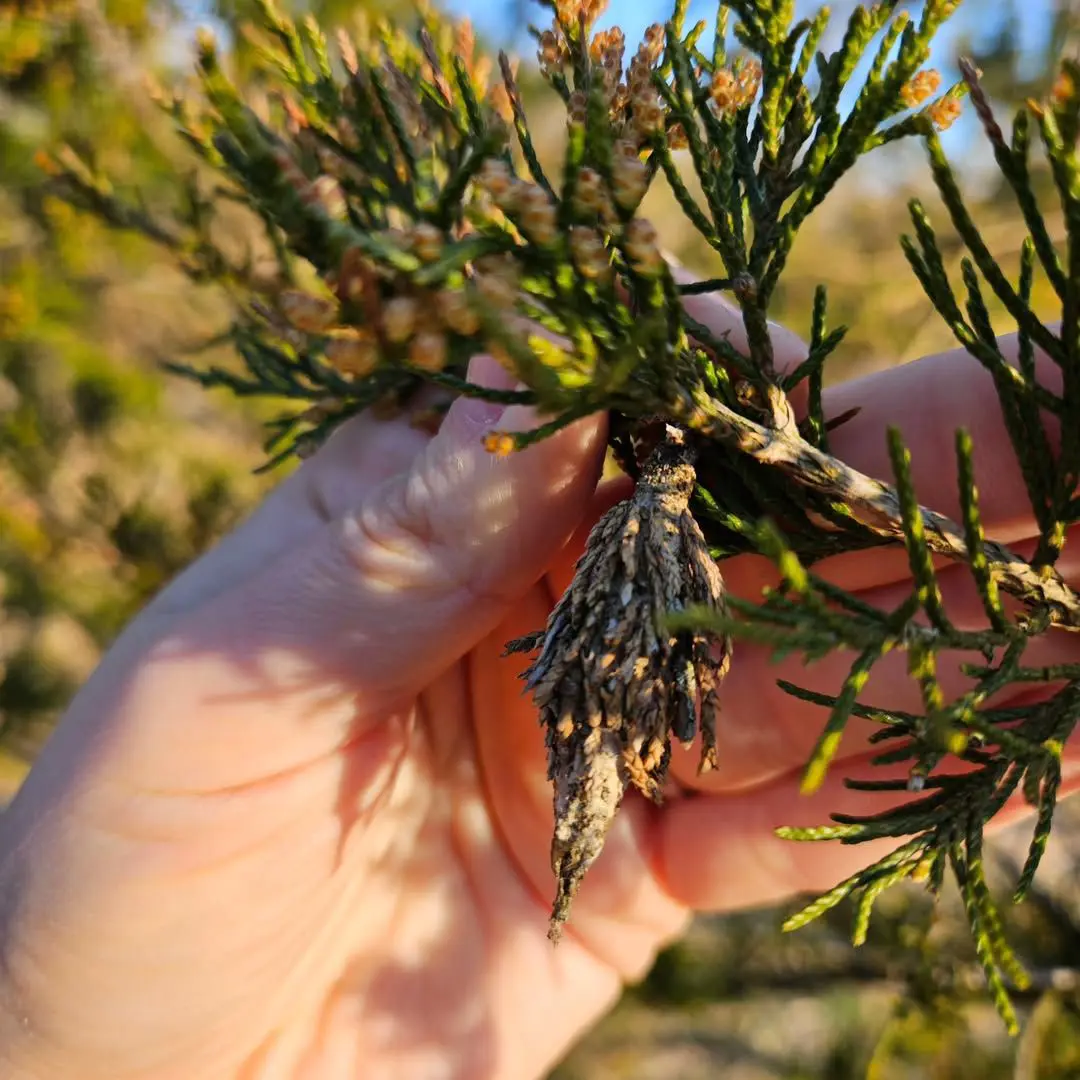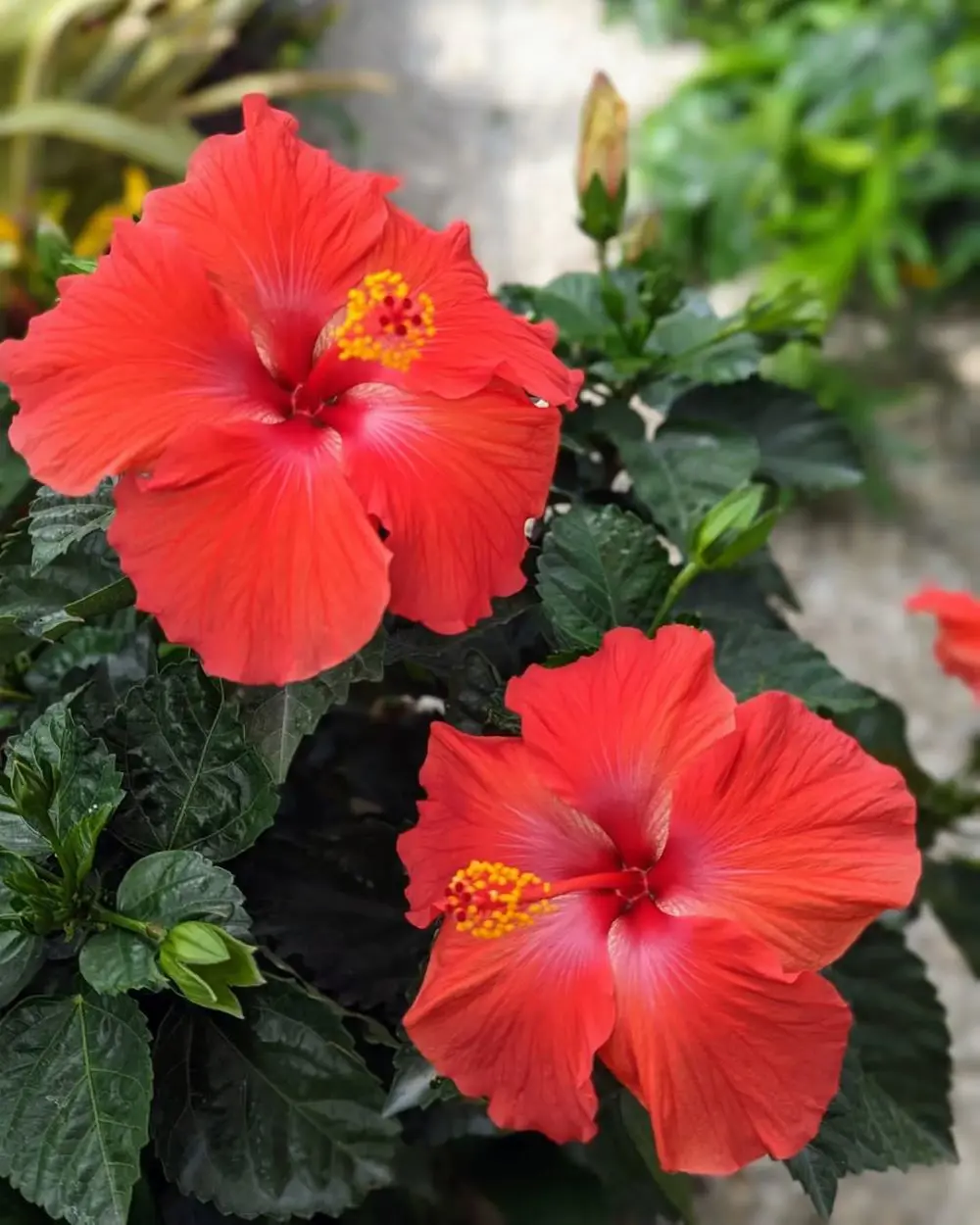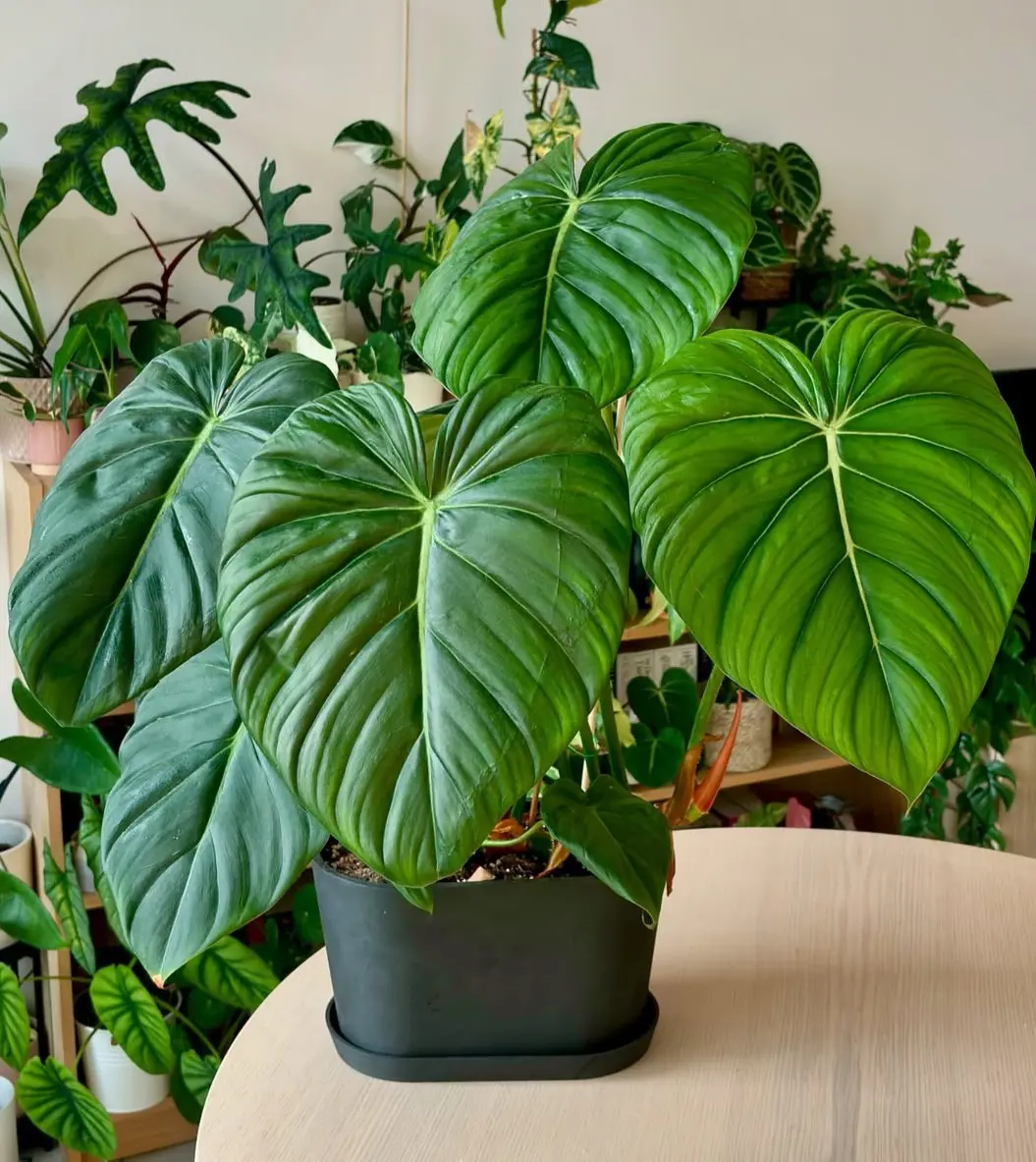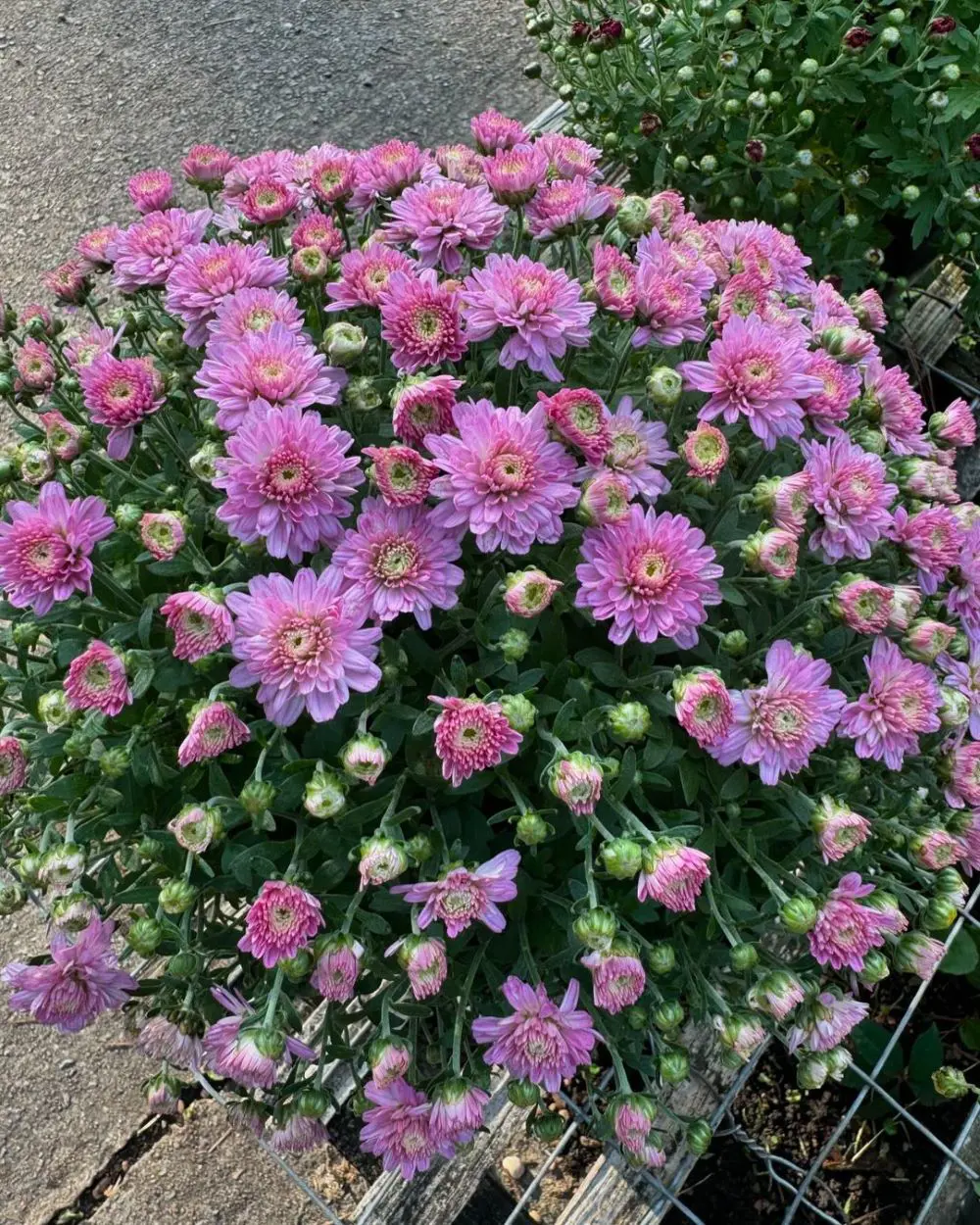Crown of thorns plant is generally low-maintenance, but it does require attention to a few key factors. Whether grown indoors or outdoors, it prefers bright, indirect light and well-draining soil.
Indoor plants may benefit from occasional misting to increase humidity, especially in dry climates or heated indoor environments. On the other hand, outdoor plants should be protected from extreme temperatures and frost, as they prefer warmer conditions.
Light
Crown of thorns thrive in bright light, so place them in a location where they can receive at least 4 to 6 hours of direct sunlight each day. However, they can tolerate some partial shade, especially during the hottest part of the day in very warm climates.
Temperature
These plants prefer warm temperatures and are sensitive to cold. Ideally, keep them in an environment where temperatures remain between 65°F and 85°F (18°C and 29°C) year-round. Protect them from temperatures below 50°F (10°C), as they are sensitive to frost.
Humidity
Crown of thorns plants are native to Madagascar, where they typically grow in warm, arid climates with low humidity. As a result, they are well-adapted to dry conditions and can tolerate relatively low humidity levels.
Water
Crown of thorns are succulents and are drought-tolerant, so it's essential not to overwater them. Allow the soil to dry out partially between waterings. Water deeply but infrequently, and ensure that the soil has good drainage to prevent waterlogging, which can lead to root rot. During the growing season (spring and summer), water when the top inch of soil feels dry. In the dormant season (fall and winter), reduce watering to allow the plant to rest.
Soil
Use a well-draining potting mix specifically formulated for cacti and succulents, or make your own by combining equal parts of potting soil, sand, and perlite. This type of soil prevents water from pooling around the roots, reducing the risk of root rot.
Fertilization
Feed crown of thorns plants sparingly during the growing season with a balanced liquid fertilizer diluted to half strength. Apply fertilizer every 4 to 6 weeks to promote healthy growth and flowering. Avoid fertilizing during the dormant season.
